The old man is crying. Tears of disbelief as much as anything else. There is mist in his eyes, a lump in his throat.
“We have to beat them once,” he pleads, with a thick rural accent.
It is 2015 and Cistercian College Roscrea, the private boarding school of 190 boys on the Leinster/Munster border, is about to unseat Blackrock College, the most famous rugby nursery in the country.
“I played and lost here to Brendan Mullin’s ‘Rock team in 1982,” goes another delirious father at full-time. “We had never beaten them. Until now! That’s why it means so much.”
The pitch invasion is straight out of a local GAA scene. Such emotional celebrations are unfamiliar to Donnybrook regulars who quietly gather their mink coats and panama hats before shuffling towards their Land Rovers.
The pitch invasion is straight out of a local GAA scene. Such emotional celebrations are unfamiliar to Donnybrook regulars who quietly gather their mink coats and panama hats before shuffling towards their Land Rovers.
In Ireland the notion that rugby is a game for hooligans played by gentlemen still rings true, but there are cracks in traditional norms. Not enough, but some.
Maybe this was a poor Blackrock team. Sure, who is this Caelan Doris fella anyway? Or maybe it was part of a growing trend. In the recent past Blackrock have lost fair and square to well organised yet much smaller schools like Kilkenny College, St Gerard’s, Gonzaga and Roscrea.
Maybe the gap is closing.
It isn’t.
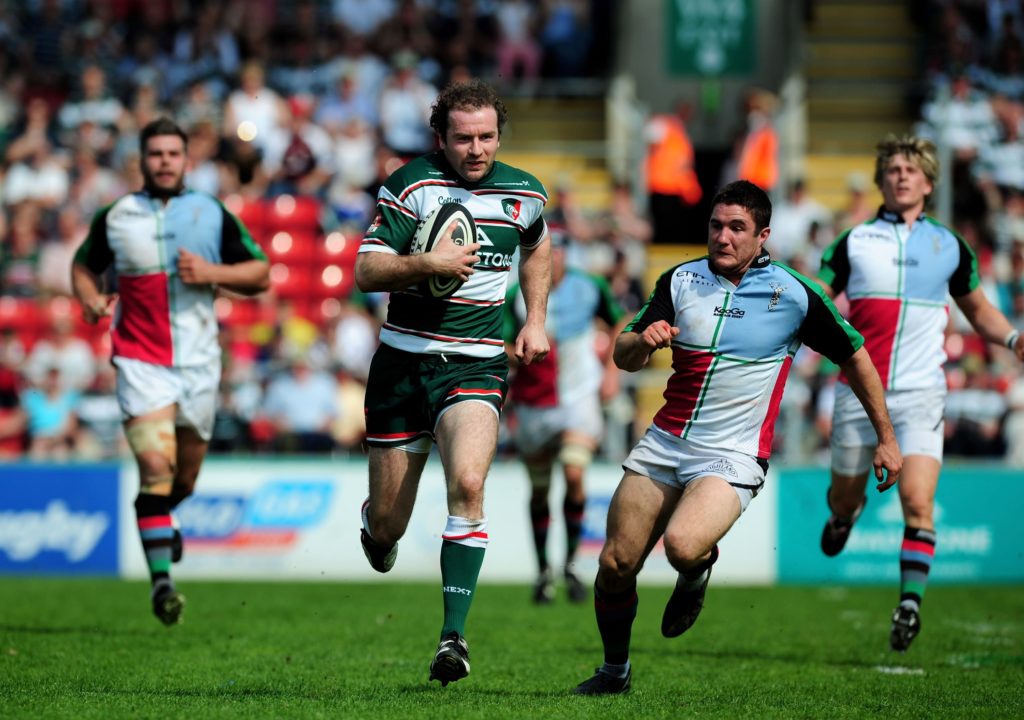
Blackrock refuse to stand still. They keep evolving with bigger and slicker teams. They keep winning ‘The Cup’ – sixty-nine times between 1887 and 2018. To put that in context, Belvedere College are next on the Leinster Senior Cup roll of honour with twelve titles.
What’s different is the competition has expanded. All the schools have put professional structures in place, from coaching to conditioning, so their players are ready for what comes after.
Rugby is booming in Leinster. This can be traced back to 2000 when Brian O’Driscoll embarrassed Émile Ntamack on a sunny afternoon in Paris.
Back on the artificial grass, the dad who marked Brendan Mullin – who was Irish rugby’s O’Driscoll before O’Driscoll came along – has hoisted a player onto his shoulders.
There are even prying eyes from English clubs in case the next Geordan Murphy slips through the net. But that doesn’t happen anymore. Not unless the Leinster trawler throws them back.
Mullin’s son Gavin is also out there, head in hands, but he will recover to enter the Leinster Academy alongside Doris and scrumhalf Paddy Patterson. Conor Dean, the Blackrock outhalf, and son of former Ireland outhalf Paul Dean, will sign for Connacht, as will a few Roscrea players while their gangly lock Fineen Wycherley is away home to west Cork and a Munster contract.
Drop into Donnybrook for any game from January to St Patrick’s Day and pick out the future internationals or the ones that need fattening up in the sub academy or the potential late bloomers. They are all there. Scouts from the other provinces are visible behind the posts.
There are even prying eyes from English clubs in case the next Geordan Murphy slips through the net.
But that doesn’t happen anymore. Not unless the Leinster trawler throws them back.
That 2015 campaign was a crazy one but every season is the same (think March Madness with an oval ball). Professionalism has increased the quality and the shape of these teenagers. They look like men. Leinster, and Leo Cullen in particular, shields them from the actual men for a year or two, only exposing a young player to the PRO14 when he is physically and psychologically equipped to survive.
Pick a school, pick a community and the Irish version of ‘Friday Night Lights’ is ready to be penned.
Just a week earlier Clongowes Wood College – with a lumberjack openside named Will Connors – pulled off a massive shock by dumping out a St Michael’s side that contained James Ryan, Max Deegan and Harry Byrne.

This is where we go to see Ryan and Doris, Ringrose and Sexton when all they are is a rumour.
“Is that Ross Byrne’s brother?”
It is.
“Jesus, he might be better.”
While Leinster calmly figure this out, Ulster, Munster and Connacht must wait in the wings.
There are ten former Leinster schoolboys in the Ulster senior squad, another ten in Connacht and, including the Wycherley brothers, Munster have seven on their books.
These numbers are only going to expand.
***
Leinster schools rugby might sound like the jewel in the crown of Irish sport but since the 19th century it has been ridiculed, reviled even, by large sections of society.
To understand how monumentally important ‘The Cup’ is to current and past pupils, our best advice is to Google ‘Ross O’Carroll Kelly.’
Paul Howard used to be an award winning sports writer but 18 novels later he has become the scribe who invented ‘Ross’; a fictional, uber wealthy, former schools outhalf who still blames “Drico and Rog” for blocking his path to global stardom. Howard has flogged 1.5 million books off his knack of capturing the enduring zeitgeist.
The true magic of Howard’s satirical prose is that the people he mocks – southside Dubliners with Californian accents – are the very people who put novels such as ‘Schmidt Happens’ and ‘PS, I Scored The Bridesmaids’ on the bestseller list.
Anyway, ‘The Cup’ has always been a seriously big deal. It is knockout rugby and there’s no chance of that changing while the traditionalists still draw breath.
Same goes for drug testing.
In that there is none.
Schools are essentially a law unto themselves. Fears of a legal quagmire prevent us knowing with certainty if Irish schools rugby has a doping problem.
Professor Brendan Buckley, Sport Ireland’s anti-doping expert, in 2013
“Schools are essentially a law unto themselves,” Professor Brendan Buckley, Sport Ireland’s anti-doping expert told me in 2013 and in every year since. “Fears of a legal quagmire prevent us knowing with certainty if Irish schools rugby has a doping problem.
“We don’t want to commit an assault on a teenager by insisting that they provide a urine or blood sample,” Buckley explained. “We need parental consent.”
The parents do not consent.
“If the opportunity arose we would enter into an arrangement of testing in the schools,” Dr Una May, Sport Ireland’s anti-doping chief told The Irish Times, “but at this moment in time we don’t have jurisdiction. It would be my preference for them to be part of the system. That is a matter for rugby to solve.”
The stalemate suits each and every ostrich involved in the game.
That aside, a once strained relationship between the elite rugby schools and Leinster has softened.
For a long time, Leinster couldn’t get inside these institutions to coach or monitor conditioning. The rivalries were too fierce. Even when Michael Cheika, Leinster head coach between 2005 and 2010, whipped the province into shape, the door was only slightly ajar.
The first wave of Glasnost began when multiple retired players returned to coach at their alma maters.
The schools were already high performance centres on a comparable scale to leading sports nurseries all over the world. Effectively, Leinster has three mini-academies – Blackrock, St Michael’s and Clongowes Wood College – to cherry pick from.
Since 1996 rugby has been a career option for the best performers on the Donnybrook stage. This was the year Cullen left Blackrock – and a ‘Dream Team’ that yielded nine professionals, five Ireland internationals and a British & Irish Lions captain – to enter the IRFU’s then disjointed professional ranks.
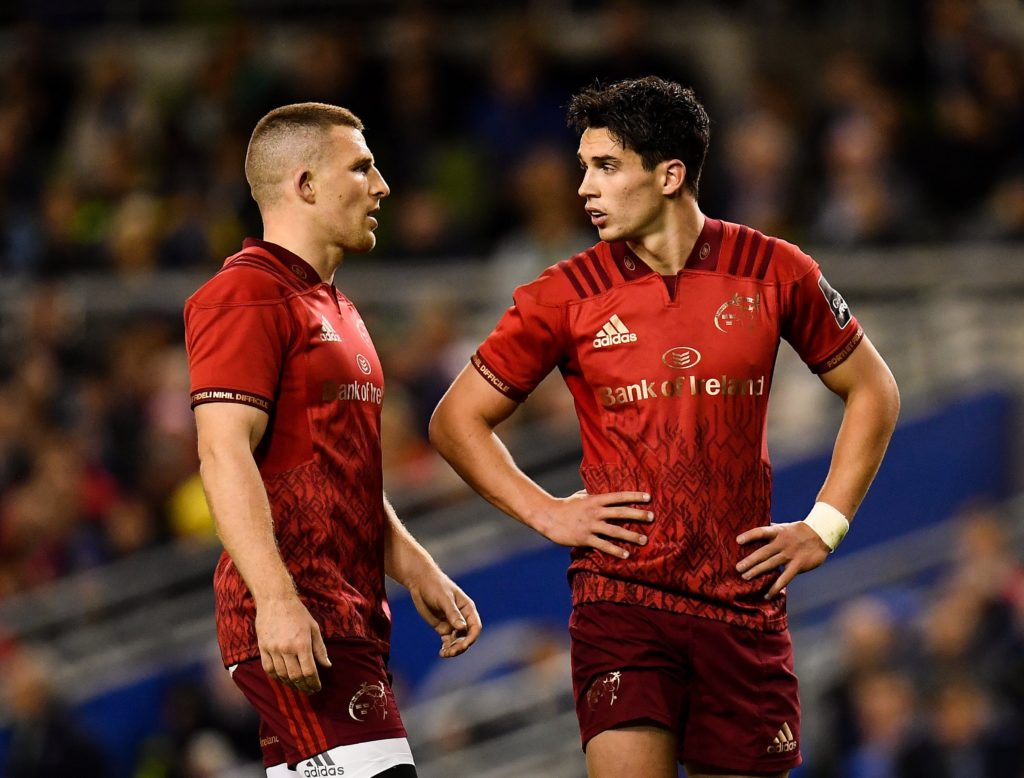
Blackrock is Leinster’s longest serving centre of excellence but the real success story in modern times is two kilometers down the Rock Road. St Michael’s sprang to life with their first title in 2007. None of those players reached the pros but they boast fourteen of the current Leinster squad. Blackrock only have seven although they have six past pupils in Connacht, five in Ulster and three in Munster – including Joey Carbery and Andrew Conway.
Then, in 2010, Joe Schmidt arrived into Irish rugby. The amount of unpaid sessions Schmidt still takes in schools and clubs all over the country is astounding. Better still, by the end of the decade, teachers/coaches were queuing up to hear the gospel according to Stuart Lancaster.
Once Leinster joined forces with the schools we were always going to see it crystallised into the current success the province enjoys.
At the top of the ladder sits Leo Cullen but down a few rungs is Noel McNamara, who spent ten years in Clongowes before arriving into his current roles as Ireland under-20s head coach and Leinster Academy manager.
The system is streamlined now.
For example, in any other era, a freewheelin’ centre like Jimmy O’Brien would have been overlooked. Instead, O’Brien is established in the Leinster squad via a stint on the Sevens circuit. Like Johne and Geordan Murphy, O’Brien came out of Newbridge College – a school based an hour out of Dublin – but unlike these Leicester Tigers, he was not forced over to England to carve out a rugby career.
Jimmy O’Brien was kept in the system partially because Johne Murphy was his coach in Newbridge and partly because Trevor Hogan – Leinster’s provincial talent coach – has an army of scouts making sure the rough gems are unearthed and polished.
You want to know why Leinster and Ireland under Schmidt won back to back Champions Cups and three Six Nations titles in an epic eight-year-streak only to be opened up by Argentina and Japan at successive World Cups?
None of this happened over night and it probably took Leinster longer than it should have to join the dots but the virtuous circle is there for all to see.
As much as Munster’s European wins in 2006 and 2008 were achieved off the back of a once vibrant Limerick club scene – Shannon RFC in particular – Leinster’s base remains the private schools.
Blackrock, St Michael’s and Clongowes are the most productive factories but Belvedere and Terenure keep the candle burning in Dublin while Newbridge and a host of smaller programs keep sending up talent like O’Brien, John Cooney and Jack Conan.
None of this will be enough to keep Ireland in the top three or four nations on the planet.
“You want to know why Leinster and Ireland under Schmidt won back to back Champions Cups and three Six Nations titles in an epic eight-year-streak only to be opened up by Argentina and Japan at successive World Cups?”
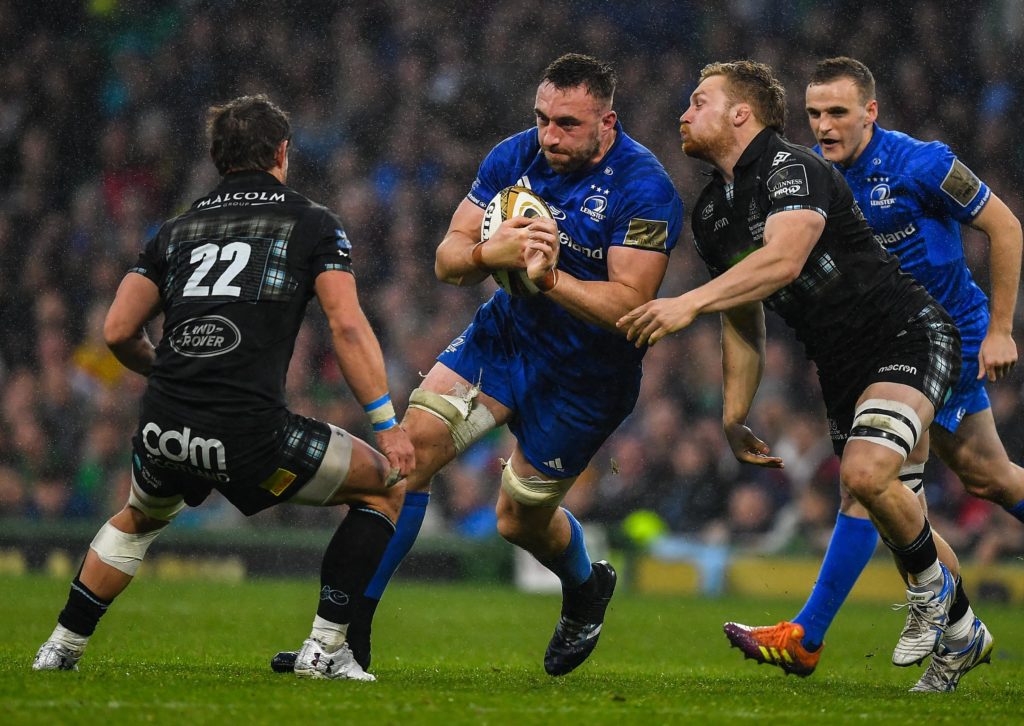
Take a bow, the Leinster Schools Cup.
“I think we’re scratching the surface of the potential that’s out there,” Cullen admitted to The Sunday Independent. “I still think we can get miles better, would be my view. And that’s up to us, going back to this inclusivity that we have a broader appeal to all kids out there who have any interest whatsoever in playing rugby, that they have some sort of genuine pathway through, that they’re being well serviced. So that’s the challenge for us.”
These pathways need years of sweeping. Leinster’s chieftain is not talking about the fee paying schools; he is referring to the ocean of kids playing Ireland’s indigenous Gaelic Games as well as soccer.
“But you’re competing against other sporting bodies, and that’s the grassroots challenge. And some of the other sporting bodies are well funded and well organised.”
The work done by the GAA (Gaelic Athletic Association), mainly volunteers on the ground, needs to be seen to be believed. It is the central hub in almost every community, every village and every weekend the pitches are teeming with boys and girls. Cullen can speak from experience having played Gaelic football for Kilmacud Crokes before rugby became the all consuming activity in his life.
Cullen also touches upon what continually renovates sporting dynasties; the source of your talent. Pulling overwhelmingly from one social class, as Irish rugby still does, has created a sustainable structure but it will never deliver the William Webb Ellis.
[Joe] Schmidt himself described Ireland on the world stage as ‘middleweights competing against heavyweights’.
This has been proven time and time again, ever since Shane Horgan – the son of a Kiwi from the rich GAA grasslands of County Meath – uttered those famous words in 2007: “Ireland can win the World Cup.”
“Schmidt himself described Ireland on the world stage as ‘middleweights competing against heavyweights’.”
They can’t, not on their current trajectory anyway. They will eventually reach a semi-final and probably a final but even if they do arrive at that juncture, there will be too many broken bodies to handle whoever remains from the South African, New Zealander, English or French ogres.
Schmidt himself described Ireland on the world stage as ‘middleweights competing against heavyweights’.
The Leinster schools system props up rugby in Ireland. Grand Slams in 2009 and 2018 wouldn’t have happened without its existence. The Cup can take as much credit for the four stars above the Leinster crest as Johnny Sexton (whose late drop goal won the competition for St Mary’s College in 2002).
If the current schools remain the main supply line, Ireland will constantly struggle against the bigger nations. This includes Wales.
It isn’t going to change any time soon. And that’s why the elite Leinster schools are both a blessing and a curse for Irish rugby.
In fact, they are only growing stronger. Slightly less bourgeoisie, but not enough to handle giant Saracens and rapid All Blacks further down the tracks.
James Ryan and Ryan Baird – two St Michael’s lads – are shaping into Ireland’s long-term second row partnership. In the coming decade they will repeatedly have to go toe to toe with much larger specimens. This makes the rise of heavier locks like Jack Dunne (6’8) and Thomas Ahern (6’9) equally important to the fitness of outstanding athletes like Baird and Ryan.
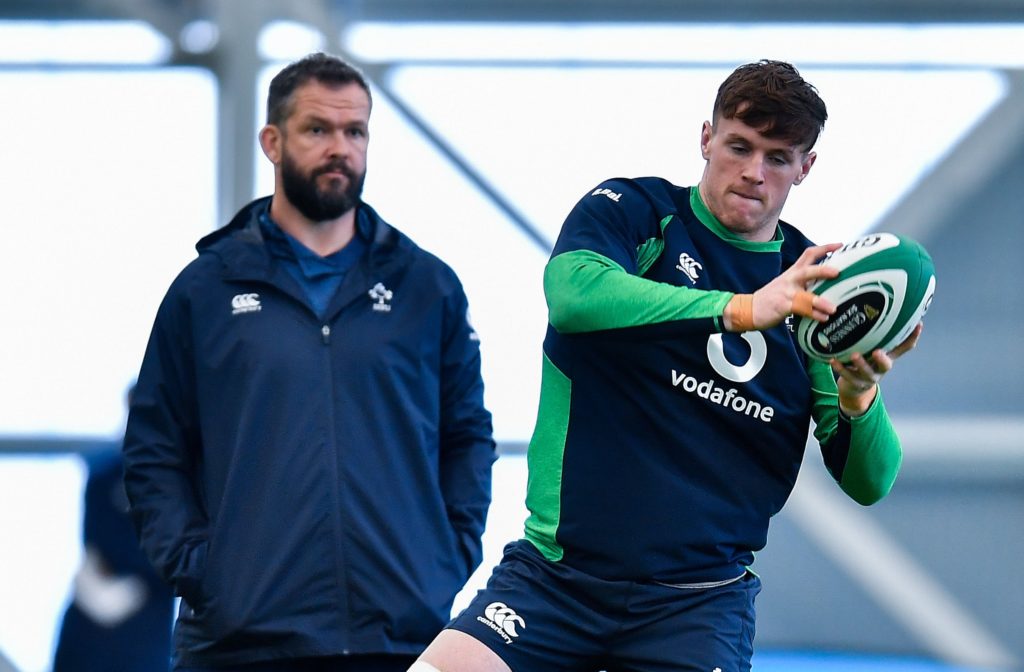
Another tributary into the Leinster Academy that should flow with the same intensity as the schools is the clubs. Basically, the naturally gifted players who dance between different sports.
A good example is Conor O’Brien. The powerful centre is already a handy weapon for Leinster. O’Brien is from GAA stock having represented Westmeath Gaelic footballers up to under-18 while his father had an impressive career as an inter-county hurler.
There should be hundreds of Conor O’Briens banging down the provincial academy doors.
Some are recruited by the big schools – Carbery did one very successful year in Blackrock so they can claim him as much as Athy RFC – but there is not enough evidence of talent coming from unfamiliar sources.
For historical reasons, rugby in Ireland is not as popular as international football, nor is it rooted in the community like the GAA. Professionalism could have crossed the class barrier and separated the sport from rival team games but somebody forgot to circulate that memo.
Sean O’Brien and Tadhg Furlong became instant cult heroes; strong, skilful country fellas who found their life’s calling: physical dominant Irish men on a world stage. There are so many more O’Briens and Furlongs out there.
On the special days, rugby can unite everyone in Ireland, but its identity is still wrapped up in established professions like law and medicine.
Irish Rugby’s gatekeepers have not put enough feelers into GAA territories or soccer hotbeds to find hard men like Trevor Brennan (depressingly, his giant offsprings are both French underage internationals).
Sean O’Brien and Tadhg Furlong became instant cult heroes; strong, skilful country fellas who found their life’s calling: physically dominant Irish men on a world stage. There are so many more O’Briens and Furlongs out there.
The pro game should have altered this by now, especially considering rugby is the only team sport on an island of seven million where the athletes can earn a very good wage.
For the uninitiated, GAA sports like hurling and Gaelic football are amateur pursuits. Modern day stars, like Bernard Brogan of Dublin and Joe Canning of Galway, have managed to brand and monetise their names, even parlaying their commercial value into an entrepreneurial career.
But that’s it.
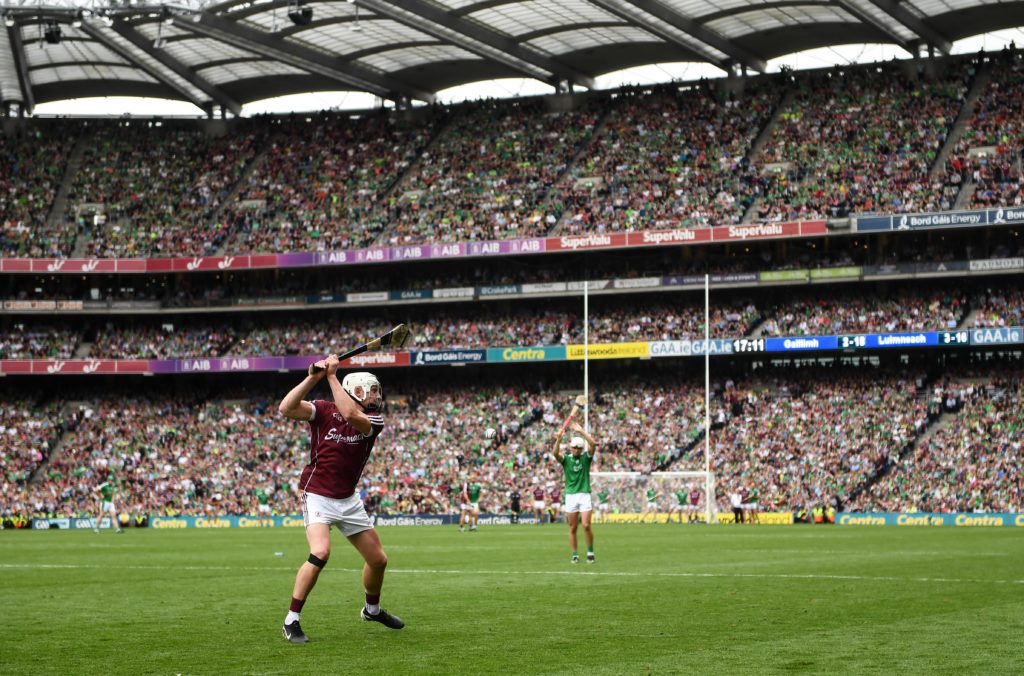
The IRFU have doubled down on harvesting talent off the land they already possess with respectable short to medium term gains that unravel every four years.
Ireland can never be compared to small rugby nations like New Zealand or Wales because of the GAA. Soccer too, but mostly the GAA. The overlap between these sports should be fluid and constant. Hurling – the sport Gordon D’Arcy played as a child – is Irish rugby’s great untapped resource.
Gaelic Games do suffer from a constant talent grab that rugby has nothing to do with it. There are Aussie Rules camps throughout the winter to identify Irish boys and girls with the potential to adapt to professional life Down Under.
But the GAA are too vast, too durable an organisation to be overly bothered by these annual raids. Also, the prodigal athlete tends to return home after a few swings at an AFL career when life under a big hot sun doesn’t prove as fulfilling as the brochure promised.
Two lost souls are still mourned. The half Fijian/half Irish, Cork hurling sensation Setanta Ó hAilpín and Conor Nash.
Nash’s departure was equally felt by Leinster. A six foot six inch full-back, he had already played for Ireland under-18s and entered the Leinster Academy, when Hawthorn FC lured him to Australia in 2016.
The AFL scouts – who are really Irish people on an earner – know there are plenty more Conor Nashs on the Kilkenny hurling and Kerry football prairies.
You won’t find Shane Horgan sized wingers or a brawler like Trevor Brennan or Seán O’Brien’s farmer strength in Donnybrook.
The secret to Leinster’s success since 2009 comes down to getting themselves organised. Any players they pass on, Connacht and Ulster can scoop them up. Munster tends to head hunt Leinster players who are close to being fully formed but cannot get their game (this drives Cullen up the walls).
Hurling is also where Ireland’s technical geniuses – the French-style scrum halves, the Kiwi opensides – are hiding in plain sight.
Irish rugby looks unstoppable until these young men from nice families and well rounded backgrounds are forced into brutal wars against multicultural opposition like New Zealand and England.
The genetic disadvantages will only expand so long as the Seàn O’Briens and Tadhg Furlongs of this little island are smashing ash off each other in hurling’s cathedral at Semple Stadium in high summer (a sight to behold if you ever get the chance).
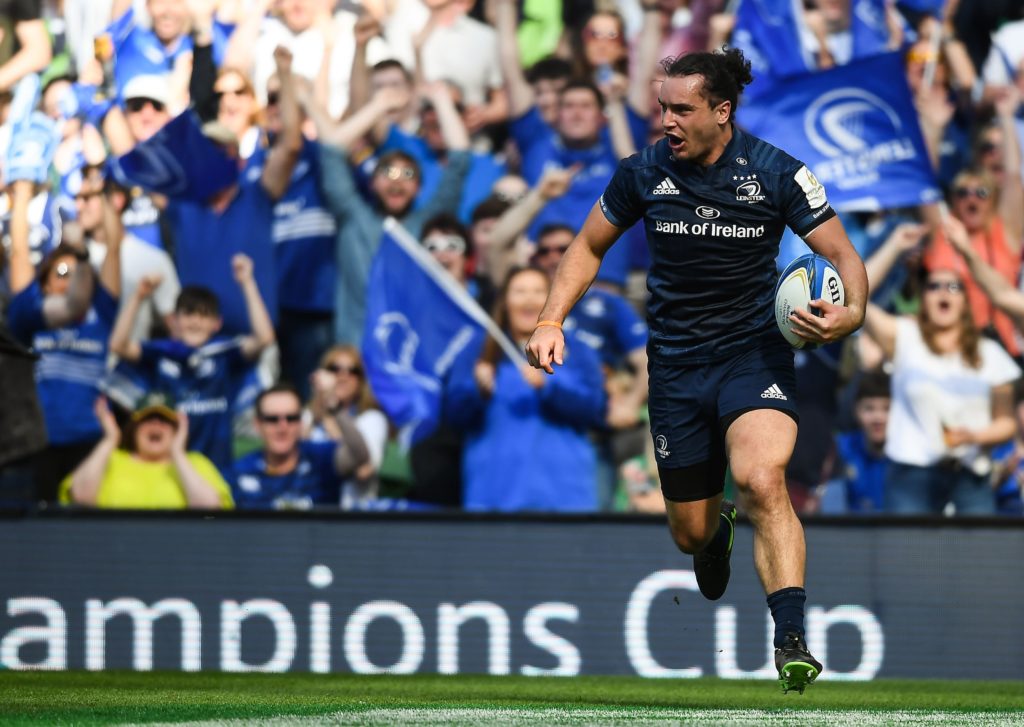
Hurling is also where Ireland’s technical geniuses – the French-style scrum halves, the Kiwi opensides – are hiding in plain sight.
When rugby does pick up the odd spare from the GAA they are transformed into gigantic national figures like Kerry pure bloods Mick Galwey and Moss Keane, and the immortal Willie Duggan from Kilkenny.
But the Aussies are doing a much better job at tempting young Irish men and women to pick up an oval ball.
The solution, up until now, has been to nab durable men like CJ Stander and Bundee Aki who are frustrated with their lack of opportunities in South Africa and New Zealand. James Lowe will be the last of the foreign brigade to wear a green jersey for some time, unless South African-born Kenyon Knox or Hawaiian Roman Salanoa come through the Munster ranks. With the three-year residency rule stretched to five, this recruitment angle is no longer worth the investment.
Meanwhile Leinster are busy tending to their own flock on the Rock Road. The system is rightly envied the world over but imagine if Cullen gets what he truly desires and gets to source the talent beneath the surface. Neither Leinster nor Irish rugby would ever look back.
If you’ve enjoyed this article, please share it with friends or on social media. We rely solely on new subscribers to fund high-quality journalism and appreciate you sharing this so we can continue to grow, produce more quality content and support our writers.



Comments
Join free and tell us what you really think!
Sign up for free